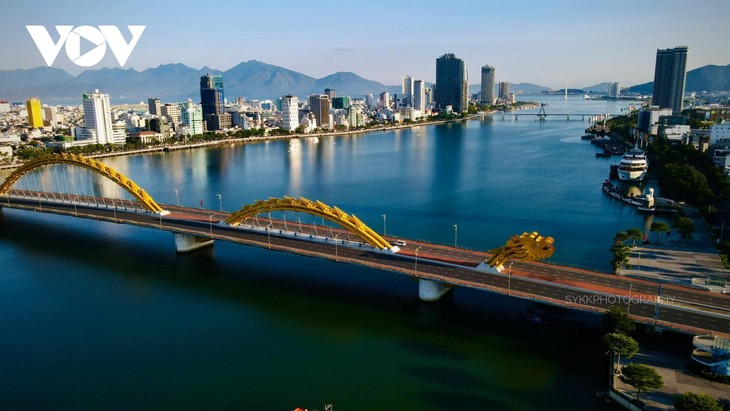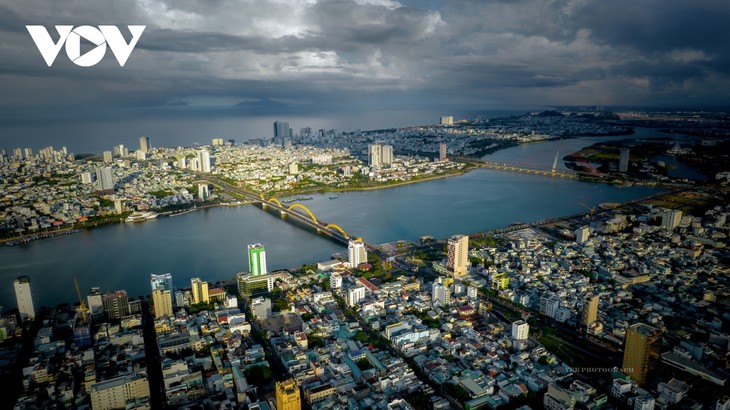(VOVWORLD) - Da Nang city separated from Quang Nam-Da Nang province in 1997 to become a centrally governed city. Its urban landscape has evolved dramatically since then. The so-called “Da Nang phenomenon” came to life as Da Nang’s urban area quickly quadrupled. Since its separation it has become the most modern city in Vietnam’s central region, and has been honored multiple times as the most livable city in Vietnam.
An apartment building in Nai Hien Dong ward, Son Tra district, is now the home of families resettled from Dai Dia Bao fishing village on the east bank of the Han river. Relocating people from the river bank 20 years ago was the first milestone of Da Nang’s urban development in the early days. It changed the lives of these poor fishermen and their families.
Nguyen Thi Than, a former resident, said, “Our life was extremely hard back then. The authorities built this apartment and moved us in. It’s safe for our kids to travel between home and school now. Crumbling rocky paths and makeshift houses collapsing on stormy days are things of the past.”
In 25 years Da Nang has changed significantly. A city with its back to the sea now looks toward the sea. Once only the Nguyen Van Troi bridge crossed the Han river. Now, nine bridges link the two banks, each with a unique design. Song Han Bridge, whose massive deck could swing 180 degrees, and Dragon Bridge spraying fire are undoubtedly a major highlight of Da Nang. It enchants visitors with its dazzling light show and a water and fire-breathing dragon show on every Saturday and Sunday night.
 Dragon Bridge is an icon of Da Nang city. (Photo: Hai Son) Dragon Bridge is an icon of Da Nang city. (Photo: Hai Son) |
Da Nang’s gross regional domestic product (GRDP) has grown eight fold and its contribution to the national budget has grown 23 fold. Tourist arrivals are 55 times what they were in the early days.
Associate Professor Doctor Tran Dinh Thien, former head of the Vietnam Economics Institute, said Da Nang’s achievements are unmatched. Da Nang has succeeded because it leveraged the combined power of the market, openness, integration, and its own advantages.
Thien said, “‘Distinctive’ and ‘high-class’ are two words to describe Da Nang’s modernization and development. We have taken our position and prestige up a notch by setting ambitious goals and acting resolutely. Da Nang keeps up its morale through advancement.”
By 2030, Da Nang intends to be a modern city and the city that drives economic development in the Central and Central Highlands region. Da Nang will continue extending its urban landscape. By 2050, Da Nang wants to be recognized as a special city and the driver of Vietnam’s socio-economic development. The city will strive to be internationally recognized for finance, services, tourism, and technology. In anticipation of a 2.5-million population in 2030, Da Nang will buid a municipal administrative center in Hai Chau district and a similar center handling grassroots issues in Hoa Vang district.
 Da Nang city (Photo: Hai Son) Da Nang city (Photo: Hai Son) |
Nguyen Van Quang, Secretary of the Da Nang municipal Party Committee, underlined the city’s planning until 2030 with a vision to 2045.
“We will do everything we can to realize our aspiration to be a smart, dynamic, creative, livable city”, said Quang.